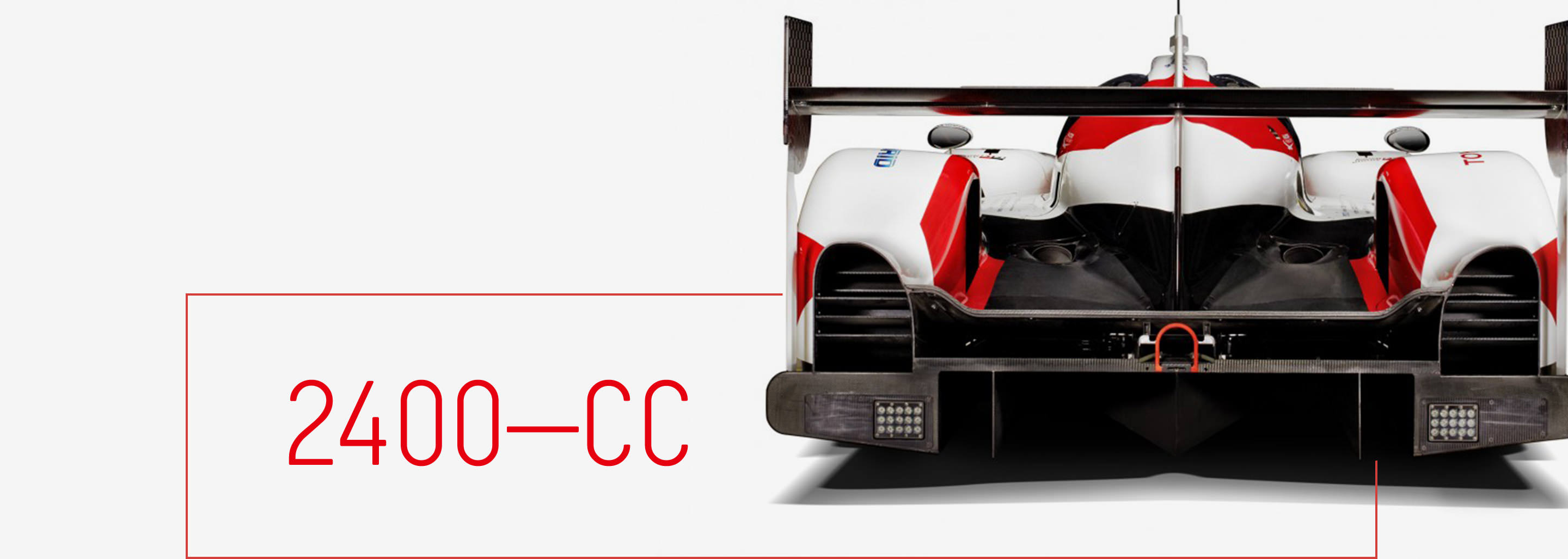TS050 Hybrid
Introducing the TS050 HYBRID.
Built for efficiency.
Ready for a championship.
TOYOTA GAZOO Racing completely redesigned the TS050 HYBRID for the 2016 FIA WEC to meet revised regulations, which limit available onboard fuel and cut power output by 10%. Because of these new regulations, the main focus of development for the new TS050 HYBRID became creating ways to compensate for this loss while still generating increased performance. Among the innovative solutions included in the new TS050 HYBRID is a completely redesigned powertrain, smart aerodynamic design for reduced drag and better downforce, and improved suspension geometry for superior cornering performance.

A SMARTER WAY TO HIGHER POWER OUTPUT
The new TS050 HYBRID adopted several new performance enhancements such as 8MJ power storage capacity and an innovative high-power lithium ion battery for recovering brake energy. This increases the weight of the car, not only from the battery but also from the two motor generators, so the team reduced the car’s overall weight by redesigning the front motor to achieve better aerodynamic performance, allowing for improved airflow under the car. Toyota engineers also reduced weight by using lighter carbon materials for the engine and chassis.
MAXIMUM POWER
736KW
/1000PS

LEAPS AHEAD IN PERFORMANCE EFFICIENCY
TOYOTA GAZOO Racing introduced a turbo engine for the first time since entering the WEC in 2012, choosing a turbo engine for its energy efficiency and the ability to deliver steady high-revolution power output. The race team selected an innovative V6 system to achieve the best balance of power and efficiency. Because of fuel-flow and fuel tank size regulations, engineers chose a 2.4-liter displacement, supplemented with two turbo chargers to deliver the required power and increase torque. Since the turbo engine design resulted in higher running temperatures, additional components and space around the powertrain were needed. In spite of this, the new chassis’ sleek aerodynamic performance contributes to an optimized all-around race package.
VEHICLE SPECS
| Type | LMP1-H (Le Mans Prototype – Hybrid) |
| Bodywork | Carbon fibre composite |
| Windscreen | Polycarbonate |
| Anti roll bars | Front and rear |
| Length | 4650 mm |
| Width | 1900 mm |
| Height | 1050 mm |
| Suspension | Independent front and rear wishbone, pushrod system |
| Springs | Torsion bars |
| Steering | Hydraulically assisted |
| Engine | V6 direct injection twin-turbo |
| Engine capacity | 2.4 liter |
| Fuel | Petrol |
| Fuel Capacity | 62.5 liters |
| Lubricants | Mobil 1 |
| Engine Power | 368 kw / 500 PS |
| Hybrid Power | 368 kw / 500 PS (front and rear combined) |
| Combined Power | 736 kw / 1000 PS |
| Battery | High-powered lithium-ion battery developed by Toyota |
| Front Hybrid Motor | AISIN AW |
| Rear Hybrid Motor | DENSO |
| Inverter | DENSO |
| Tires | Michelin Radial |
| Front Tires | 31/71-18 |
| Rear Tires | 31/71-18 |
| Discs | Ventilated front and rear in carbon |
| Brake calipers | Akebono mono-block light-alloy |
| Brake discs | Carbon ventilated |
| Gearbox | Transversal with 7 gears, sequential |
| Gearbox casing | Aluminium |
| Driveshafts | Constant velocity tripod plunge-joint driveshafts |
| Clutch | ZF-supplied multidisc |
| Differential | Mechanical locking differential |